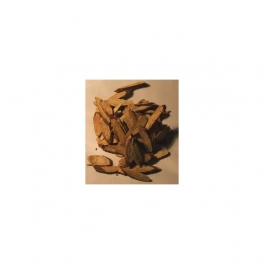Plant
Chemicals
Include: |
Acetic-acid, Acetoin ,Acetol, Acetophenone, Alpha-terpineol Aluminum, Anethole, Apigenin, Ascorbic-acid, Asparagine, Benzaldehyde, Benzoic-acid, Benzyl-alcohol, Beta-sitosterol, Butan-1-ol-2-one, Butan-1-ol-3-one, Butane-2,3-diol, Butanoic-acid, Butylphthalate, Butyric-anhydride, Calcium, Camphor, Caproic-acid, Carvacrol, Choline, Chromium, Cobalt, Cumic-alcohol, Decane, Decanoic-acid, Difurfuryl-ether, Dihydro-5,5-dimethyl-2(3h)-furanone, Dimethyl-phenylethyl-alcohol, Docosane, Dodecane, Dodecanoic-acid, Eicosane, EO, Estragole, Estriol, Ethyl-linoleate, Ethyl- linolenate, Ethyl-palmitate, Ethyl-phenol ,Ethyl-phenylacetate, Eugenol, Fenchone Formononetin, Fructose, Furfural, Furfuryl-acetate, Furfuryl-alcohol, Furfuryl-butyrate, Furfuryl-formate,F urfuryl-propionate, Furyl-methyl-ketone, Gamma-butyrolactone, Gamma-heptalactone,G amma-hexalactone, Gamma-nonalactone, Gamma- octalactone, Geraniol, Glabrene, Glabric-acid, Glabridin, Glabrol, Glabrolide, Glabrone, Glucose, Glycocoumarin, Glycyrin, Glycyrol, Glycyrram, Glycyrrhetic-acid, Glycyrrhetinic-acid, Glycyrrhetol,G lycyrrhisoflavanone, Glycyrrhisoflavone, Glycyrrhizic-acid, Glycyrrhizin, Glyzaglabrin, Glyzarin, Guaiaco, Hederasaponin-c, Henicosane, Heptadecane ,Heptane-1,2-diol, Heptanoic-acid, Heranol, Herniarin, Hex-trans-3-en-ol, Hexadecane, Hexadecanoic-acid, Hexadecyl-acetate, Hexan-1-ol, Hexanoic-acid, Hexanol, Hexyl-formate, Hispaglabridin-a ,Hispaglabridin-b, Indole, Iron, Isobutyladipate, Isoglabrolide, soglycyrol, Isoliquiritin, Isomucronulatol, Isoneoliquiritin, Isoschaftoside, Isoviolanthin, Kumatakenin, Lavandolol, Licochalcone-a, Licochalcone-b, Licoflavonol, Licoisoflavanone, Licoisoflavones, Licoric-acid, Licuraside, Licuroside, Lignin, Linalool, Linalool-oxides, Liqcoumarin, Liquirazide, Liquiritic-acid, Liquiritigenin, Liquoric-acid, Magnesium, Maltose, Manganese, Methyl-ethyl-ketone, Methyl-hexa-decanoate, Methyl-hexanoate, Myrtenal, N-methyl-2-pyrrolidone, N-nonacosane, N- tetradecane, Neoliquiritin, Neosoliquiritin, Nonadecane, Nonanoic-acid, O-acetyl-salicylic-acid, O-cresol, O-methoxy-phenol, O-tolunitrile, Octacosan-1-ol, Octadecane, Octanoic-acid, P-cymenol, P-methoxy-phenol, Palmitic-acid, Pentadecane, Pentadecanoic-acid Pentan-1-ol, Pentanoic-acid, Phaseollinisoflavan, Phenethyl-alcohol, Phenol, Phenyl-acetaldehyde, Phenylpropionic-acid, Phosphorus, Propionic-acid, Pyrazole, Rhamnoisoliquiritin, Rhamno-liquiritin, Salicylic-acid, Schaftoside, Silicon, Stigmasterol, Sucrose, Sugar, Terpin-1-en-4-ol, Tetracosan-1-ol, Tetracosane, Tetradecanoic-acid, Tetramethyl-pyrazine, Thiamin, Thujone, Thymol, Tiglaldehyde, Tin, Tricosane, Tridecane, Tridecanoic-acid, Trimethyl-pyrazine, Umbelliferone, Undecane, Undecanoic-acid, Zinc |
 Maximize
Maximize








































